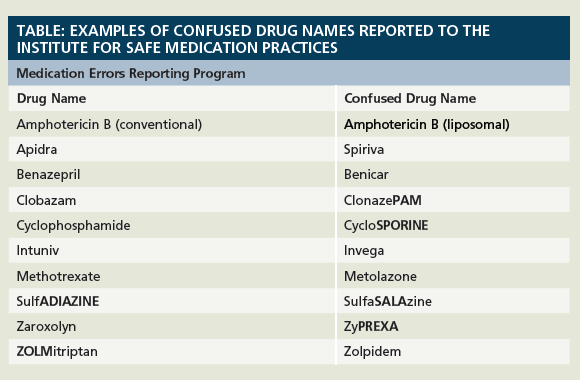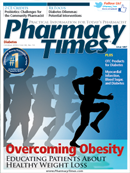Publication
Article
Pharmacy Times
Confused Drug Names
Author(s):
The Institute for Safe Medication Practices (ISMP) regularly receives reports involving dispensing errors due to drug name mix-ups. A selection of confused name pairs reported to the National Medication Errors Reporting Program, operated by ISMP, can be found in the Table. In many cases, the mix-ups are related to look-alike or sound-alike drug names or look-alike packaging. It’s not unusual for such mix-ups to lead to patient harm. Thankfully, in the 2 cases discussed below, the errors were caught before the patients were harmed.

ZERIT (stavudine)—ZYRTEC (cetirizine) Mix-up
A medical assistant in a physician’s office recorded the antiretroviral agent stavudine (20 mg orally every 12 hours) in a patient’s medication profile in an electronic medical record. A nurse reviewed the medication list with the patient and changed the stavudine entry to stavudine (10 mg by mouth nightly), a different dose and frequency. A pharmacist noticed that the medication and dose did not fit the patient’s clinical condition, so she interviewed the patient. The pharmacist found that the patient was actually taking the antihistamine cetirizine 10 mg each night.
The patient did not receive the incorrect medication in this case. It is believed that this mix-up originated because of similarities in the names of these products. The nurse caught the dosing error but missed that the wrong drug was entered. The brand names Zerit and Zyrtec are similar, and the generic names stavudine and cetirizine can sound similar.
Letairis or Letaris?
LETARIS is a formerly marketed Dutch brand name for letrozole, which is indicated for the treatment of local or metastatic breast cancer that is hormone receptor—positive or breast cancer with unknown receptor status in postmenopausal women. Letrozole is known by the brand name FEMARA in the United States. LETAIRIS (note the “I” after the “A”) is ambrisentan, a drug approved by the FDA for primary pulmonary hypertension.
Recently, a patient admitted for exacerbation of pulmonary hypertension had a preadmission medication form on which Letairis was misspelled “Letaris.” A search of Micromedex 2.0 for “Letaris” provided a result of “letrozole,” a 2.5-mg tablet. Because Letairis is available as a 5-mg tablet, 2 letrozole 2.5-mg tablets may have been used. Fortunately, given the patient’s diagnosis, a pharmacist contacted the patient’s physician, and the error was recognized.
The vast majority of drug name mix-ups, including those above, can be prevented if a pharmacist or other health care practitioner knows the indication for the medication. When drugs known to be involved in look-alike errors are prescribed, the drug name should be electronically generated or printed, and the purpose of the drug should be included on the prescription. For sound-alike name pairs, pharmacy staff should perform a read-back and spell-back of the medication name, strength, dose, and frequency of administration for verification. If the purpose of the medication is not provided, the pharmacist should ask the prescriber for it. You may also consider highlighting sections of drug names using tall man letters to help distinguish similar drug names. Finally, consider implementing higher leverage strategies (eg, barcode scanning during the production stage of dispensing) that address contributing factors to errors in the health care delivery system. Please refer to the April 2007 issue of Pharmacy Times for examples of errorprevention strategies in order of effectiveness for creating lasting system changes for safe medication use.







